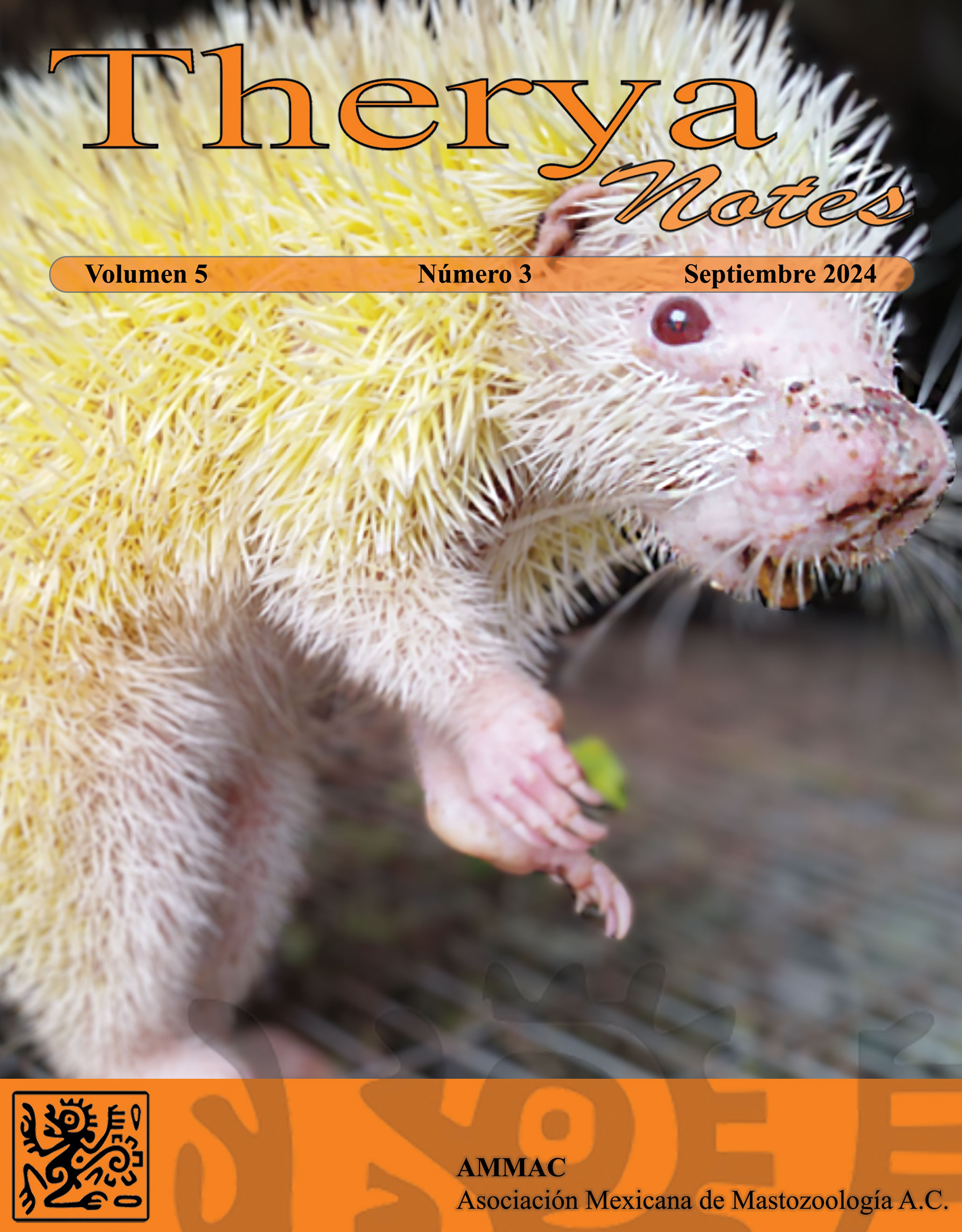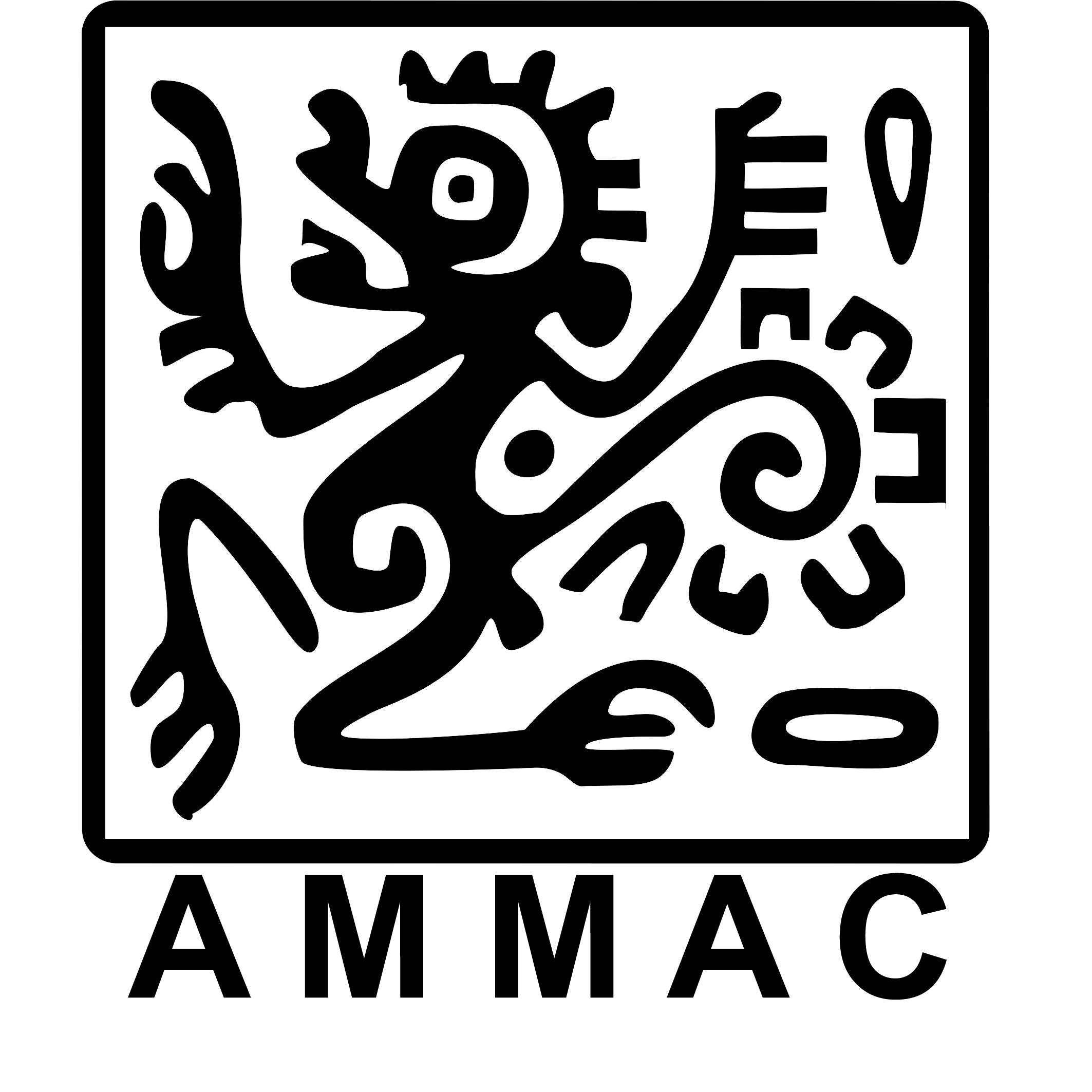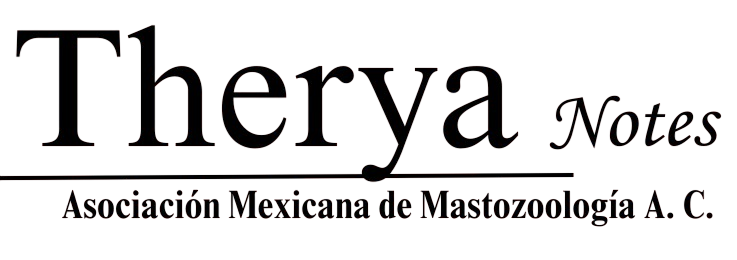Presence of gastrointestinal parasites in Dicotyles tajacu in conservation areas and backyards of Campeche and Yucatán, México
DOI:
https://doi.org/10.12933/therya_notes-24-182Keywords:
Captivity, parasitosis, wildlife, wild pig, zoonosisAbstract
Dicotyles tajacu faces habitat destruction, free-range poaching, and parasitism in captive animals, which causes diarrhea, weight loss, and death. This study aimed to determine the presence of nematodes and protozoa in peccaries in captivity in Campeche and Yucatán, México. The study was carried out in 2 Management Units for Wildlife Conservation (UMAs, from its name in Spanish) and 1 backyard located in Campeche, and in a Wildlife Management Farm and Facility (PIMVS, from its name in Spanish) in Yucatán, where fecal samples from 47 individuals were collected and placed in labeled polyethylene bags. In the laboratory, feces were processed by sedimentation and flotation, and gastrointestinal parasites were identified based on morphometric characteristics. The data obtained were analyzed using the χ2 test (P ≤ 0.05) in the Statistica v. 9.1 software. The peccaries of PIMVS showed a higher prevalence of parasites, with 53.3 % positive individuals, and the highest parasite load (P ≤ 0.05) due to eggs of the helminth Strongylida sp. and oocysts of the protozoan Eimeria sp. The prevalence recorded and the parasites Strongylida sp. and Eimeria sp. observed in peccaries of the PIMVS were similar to those in zoos in other countries, implying that captive peccaries are more vulnerable to endoparasitism. The determination of endoparasites in D. tajacu is relevant for animal health management in PIMVS, UMAs, and backyards to avoid zoonoses, especially before merging common spaces for the management of 2 or more species.
Downloads
Published
How to Cite
Issue
Section
License
THERYA NOTES is based on its open access policy allowing free download of the complete contents of the magazine in digital format. It also authorizes the author to place the article in the format published by the magazine on your personal website, or in an open access repository, distribute copies of the article published in electronic or printed format that the author deems appropriate, and reuse part or whole article in own articles or future books, giving the corresponding credits. The Creative Commons CC BY-NC-SD license is used.![]()















